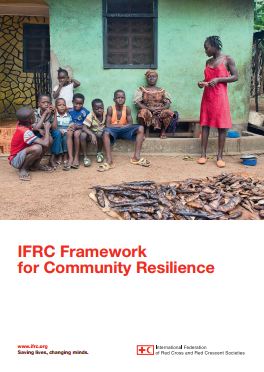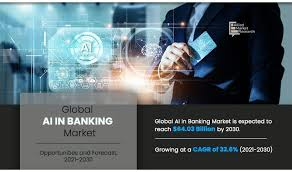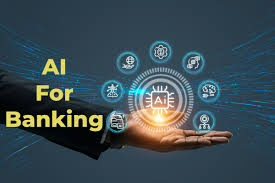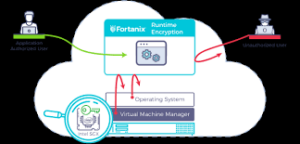ASEAN delivered a measured response to recent US tariffs. The economic ministers have collectively decided against retaliatory measures, instead opting for dialogue with Washington to address trade concerns.
Key points from the article:
- ASEAN economic ministers met virtually in Malaysia on April 10 and released a joint statement committing to “frank and constructive dialogue” with the US
- They explicitly ruled out imposing retaliatory tariffs in response to US measures
- The US tariffs were announced by President Trump on April 2, with rates between 10-49% for Southeast Asian imports
- While most countries received a 90-day suspension of these tariffs on April 9, China continues to face a 125% tariff rate after imposing its own 84% retaliatory tariff.
- Singapore’s Deputy PM Gan Kim Yong characterized the situation as “a sharp fracturing of the global economy” with “profound impact” for the region.
ASEAN’s diplomatic approach contrasts with China’s more confrontational stance, suggesting the regional bloc is prioritizing stability and dialogue while navigating increasingly complex trade tensions between major powers.
Navigating US Tariffs: Strategic Solutions for ASEAN and Singapore
Strengthening Intra-ASEAN Relations
ASEAN could respond to external trade pressures by deepening regional integration through several key initiatives:
- Accelerated ASEAN Economic Community (AEC) implementation: Fast-tracking remaining barriers to intra-ASEAN trade and investment would help create a more unified market that is less dependent on US trade.
- Enhanced regional supply chains – ASEAN countries could strategically coordinate production capabilities to create more resilient regional supply networks. For example, Thailand’s electronics manufacturing could complement Vietnam’s assembly capabilities and Singapore’s logistics expertise.
- Expanded RCEP utilization – The Regional Comprehensive Economic Partnership offers ASEAN a ready framework to deepen trade ties with China, Japan, South Korea, Australia and New Zealand, potentially offsetting US market disruptions.
- The ASEAN common digital marketplace – Accelerating digital integration through harmonized regulations and cross-border e-commerce platforms would open new avenues for trade less affected by physical tariffs.
Impact Analysis of US Tariffs
The tariffs would affect ASEAN economies differently based on their export profiles:
- Vietnam faces significant exposure in electronics and furniture exports
- Thailand could see impacts in automotive parts and food products
- Malaysia may experience pressure in semiconductor and electrical equipment exports
- Singapore, while less directly affected in goods, could face downstream impacts in financial services and logistics tied to regional trade flows
The 90-day suspension provides a brief window for diplomatic solutions, but long-term planning should account for the potential permanence of these trade barriers.
Long-Term Solutions for Singapore’s Economy
Singapore could pursue several strategic pivots:
- Diversification beyond traditional markets: Expanding services exports to South Asia, the Middle East, and Africa could reduce dependence on US-China trade dynamics.
- Value chain positioning – Singapore could strategically position itself in high-value segments less susceptible to tariffs, such as R&D, specialized manufacturing, and advanced services.
- Digital economy acceleration – Expanding Singapore’s digital service exports, which face fewer tariff barriers than physical goods.
- Green economy leadership – Positioning as a regional hub for sustainable finance, carbon trading, and cleantech solutions offers growth potential relatively insulated from traditional trade barriers.
Workforce Reskilling Priorities
Singapore should focus workforce development on:

- Advanced manufacturing skills – Developing talent in areas like precision engineering, bioprocessing, and advanced semiconductor packaging that command premium pricing despite trade barriers.
- Digital economy capabilities – Accelerating training in cloud architecture, cybersecurity, data science and digital marketing to support service export growth.
- Green skills development – Building expertise in renewable energy systems, sustainable design, and environmental compliance to capitalize on emerging sectors.
- Global-regional trade facilitation – Developing specialized knowledge in navigating complex trade regulations, supply chain optimization, and cross-border digital commerce.
Supply Chain Reconfiguration
The evolving trade landscape may require:
- Nearshoring within ASEAN – Shifting particular production closer to end markets within the region to minimize cross-border frictions.
- Supply chain diversification – Reducing dependency on any single source by developing multiple supplier relationships across different countries.
- Strategic stockpiling – For critical components, maintaining larger inventory buffers to withstand trade disruptions.
- Trade documentation automation – Deploying blockchain and AI solutions to streamline increasingly complex compliance requirements across fragmented trade regimes.
AI as a Strategic Enabler
AI can serve multiple roles in addressing trade challenges:
- Trade pattern analysis – Using predictive analytics to identify emerging opportunities and threats in shifting trade flows.
- Supply chain optimization – Deploying AI to dynamically adjust sourcing and distribution networks based on changing tariff structures.
- Productivity enhancements – Automating routine processes to maintain competitiveness despite potential cost increases from tariffs.
- Market intelligence – Analyzing vast datasets to identify untapped market opportunities less affected by US tariffs.
Singapore’s historical strengths in adapting to changing economic conditions and its sophisticated economic planning mechanisms position it well to navigate these challenges, particularly if coordinated with broader ASEAN initiatives.
Long-Term Solutions for Asia Amid Western Financial Instability
It’s important to note that as of my knowledge cutoff in October 2024, there hasn’t been a widespread central bank failure in the EU or the USA. However, I can explore hypothetical long-term solutions for Asia in a scenario where major Western economies face severe central banking challenges.
Regional Financial Architecture
- Asian Monetary Fund – Establishing a robust regional financial institution with sufficient capital to provide emergency liquidity to member states without IMF-style conditionalities that often prioritize Western economic perspectives.
- Expanded Chiang Mai Initiative – Significantly strengthening the existing multilateral currency swap arrangement among ASEAN+3 countries to protect against financial contagion and currency volatility.
- Pan-Asian deposit insurance system – Creating a regional mechanism to maintain depositor confidence across Asian banking systems should Western financial instability spread.
- Regional credit rating agency – Developing an Asia-based ratings institution with a methodology better calibrated to Asian economic models and development stages.
Trade & Economic Integration
- Accelerated RCEP implementation – Fast-tracking remaining provisions of the Regional Comprehensive Economic Partnership to boost intra-regional trade.
- “Asia-centric” supply chains – Redesigning production networks to reduce dependency on Western markets, focusing instead on serving the growing Asian consumer base.
- Enhanced ASEAN-India-China economic corridor – Developing stronger infrastructure and trade links connecting South and East Asia’s largest economies.
- Regional commodity exchanges – Establishing Asia-based trading platforms for key commodities priced in local currencies to reduce dollar dependency.
Monetary Innovations
- Asian currency basket – Creating a weighted index of major Asian currencies that could serve as an alternative unit of account for regional trade.
- Cross-border CBDC network – Accelerating development of interoperable Central Bank Digital Currencies across Asian nations to reduce reliance on Western-controlled payment systems.
- Gold-backed reserve assets – Exploring partial backing of reserves with gold to reduce exposure to potentially unstable Western currencies.
- Regional clearing mechanism – Developing alternatives to SWIFT and Western clearing houses for intra-Asian transactions.

Strategic Resource Security
- Energy security cooperation – Coordinated investment in diverse energy sources and strategic reserves to insulate from price volatility in dollar-denominated markets.
- Food security alliance – Regional coordination on agricultural production, stockpiling, and distribution to ensure stability regardless of global market disruptions.
- Critical materials partnerships – Joint development of supply chains for strategic materials (rare earths, semiconductor materials, etc.) to reduce external dependencies.
Technology & Innovation Focus
- Regional technology standards – Developing Asia-centric technical standards in emerging fields like AI, quantum computing, and biotechnology independent of Western frameworks.
- Alternative digital infrastructure – Investing in regional cloud computing, data centers, and telecommunications infrastructure to reduce reliance on Western technology providers.
- R&D collaboration networks – Creating pan-Asian research collaboration frameworks to accelerate innovation in strategic sectors.
Social Resilience Programs
- Regional skills mobility framework – Facilitating labor mobility across Asian nations to address demographic challenges and skill shortages.
- Asia-wide social protection mechanisms – Developing minimum standards for social safety nets across the region to maintain social stability during economic transitions.
- Educational alignment – Creating compatible higher education frameworks across the region to facilitate knowledge exchange and human capital development.
The key to Asia’s resilience in such a scenario would be balancing increased regional self-reliance with maintaining sufficient global engagement, avoiding the pitfalls of isolationism while reducing vulnerability to Western financial system instability.

How Tariffs Benefit National SMEs
Tariffs can provide several benefits to small and medium-sized enterprises (SMEs) within a country, though these advantages often come with broader economic trade-offs. Here’s how domestic SMEs might benefit from tariff policies:
Competitive Shelter
When imports face tariffs, domestically produced goods become relatively more price-competitive in the local market. This can particularly benefit SMEs that lack the economies of scale of multinational corporations. For example, a small furniture manufacturer might gain market share when imported furniture becomes 20-30% more expensive due to tariffs.
Market Entry Opportunity
Tariffs can create windows for local SMEs to enter markets previously dominated by imports. This temporary protection allows them time to establish operations, build brand recognition, and develop distribution networks before facing whole international competition.
Supply Chain Localization
As tariffs make imported components more expensive, larger domestic companies often seek local suppliers to maintain cost competitiveness. This creates opportunities for SMEs to become part of domestic supply chains. For instance, auto parts manufacturers might see increased demand from domestic car assembly plants seeking to reduce reliance on tariffed imports.
Innovation Catalyst
The competitive pressure created by having to justify a price premium (compared to the pre-tariff import price) can drive SMEs to innovate in product design, manufacturing processes, and business models. Some companies emerge stronger and more competitive internationally after such adaptation.
Investment Attraction
The prospect of a protected market can make domestic manufacturing more attractive for investment. SMEs may find it easier to secure funding for expansion when investors see reduced competitive threats from imports.
Regional Development
SMEs are often more geographically distributed than large corporations, so protection that benefits them can contribute to more balanced regional economic development rather than concentrating growth in major urban centers.
Practical Considerations
The benefits of tariffs to SMEs are rarely uniform or guaranteed:
- Sector specificity: Benefits accrue primarily to SMEs in directly protected sectors, while those dependent on imported inputs may suffer increased costs
- Temporary advantage: Tariff benefits tend to diminish over time as international producers adapt through methods like foreign direct investment to bypass tariffs
- Competitiveness risk: Extended protection can reduce incentives for efficiency and innovation, potentially weakening SMEs’ long-term viability
- Retaliation effects: Trade partners typically respond with their own tariffs, potentially harming export-oriented SMEs
For SMEs to maximize potential benefits from tariffs, complementary policies like access to financing, technology adoption support, and export development programs are typically necessary to translate temporary protection into a sustainable competitive advantage.
Business and Labor Implications
Business Protection Measures
- Companies may need to implement:
- Enhanced due diligence for new international business relationships
- Improved payment verification processes as supply chains shift
- Employee training focused on recognizing economic anxiety-based scams
Worker Protection Considerations
- Financial literacy programs focusing on economic uncertainty periods
- Job transition support with scam awareness components
- Community support networks to share information about emerging scams
Long-Term Outlook
The intersection of economic uncertainty from US tariffs and scam prevention presents both challenges and opportunities for Singapore:
- Challenges: Resource constraints, new sophisticated scam types, cross-border enforcement difficulties
- Opportunities: Enhanced regional cooperation, improved public-private partnerships, development of new anti-fraud technologies
Singapore’s historical emphasis on strong governance and enforcement provides a foundation for addressing these challenges, but adaptability will be required as economic conditions and scam tactics evolve. Integrating anti-scam measures into broader economic resilience strategies will be crucial for protecting businesses and workers during this period of adjustment.

AI and Digital Adoption
- 96% of banks recognize the need for recognition
- AI adoption increased to 58% in 2024 (up from 45% the previous year)
- 45% of banks are already integrating generative AI, with another 30% in early exploration stages
Current State of Banking
- 63% of banks still operate on legacy mainframe systems
- Traditional banking is being replaced by digital-first relationships
- 91% of banks report that AI and cloud initiatives have board-level endorsement

New Banking Models
- Product-centric ecosystem approach
- Banks expanding beyond traditional banking products
- Need for deeper customer understanding
- Banking-as-a-Service (BaaS)
- Leveraging API-first architecture, cloud computing, microservices
- Collaboration with third-party solution providers
- Features like account switching and open banking compliance
- Banking as a lifestyle
- Seamless integration of financial activities into daily routines
- Focus on convenience, accessibility, and inclusivity

Challenges
- The top challenge in modernizing legacy systems is internal skill gaps
- Need for strategic modernisation of technology partnerships
The article emphasizes that banks must adapt to these digital transformations to emphasise and meet evolving customer expectations.
AI is delivering tangible benefits, including:

Processing massive datasets at speeds exceeding human capabilities
Reducing operational costs
Improving regulatory compliance
Enhancing strategic decision-making
Transforming treasury management through improved cash flow prediction
Generative AI represents the next wave of innovation:
Over 40% of organizations are piloting or using generative AI in finance
Applications include producing organizations narratives, analyzing complex datasets, and scenario-based forecasting
Nearly all surveyed organizationsanalyzingimplement generative AI within three years

Return on investment is significant:
57% of “AI leaders” report AI investments exceeding expectations
Leading organizations embed AI across multiple functions rather than using it in silos
Challenges remain in several areas:
Organizations and privacy concerns
Integration complexities with legacy systems
Ethical considerations and potential algorithmic bias
Talent shortages in AI specializations

Future outlook:
AI will enable more personalized customer experiences
Enhanced fraud detection capabilities of new business models and revenue streams

AI Transformational Personalized Functions in Banking
Based on the article, here’s an analysis of the key AI transformations and algorithm functions revolutionizing the banking sector:
Data Processing & Analysis

- Pattern Recognition: AI algorithms process massive datasets to identify patterns that humans might miss
- Anolutionizingetection: Systems flag unusual transactions that deviate from established patterns
- Real-time Insights: Continuous monitoring and analysis of financial data streams
Treasury Management

- Cash Flow Prediction: AI has replaced complex spreadsheets with tools that forecast cash flows in seconds
- Economic Scenario Simulation: Algorithms model various economic conditions to inform decision-making
- Liquidity Optimization: Systems help optimize liquidity management through predictive modeling
Generative AI Applications

- Narrative Creation: Automatically generating comprehensive financial reports and analyses
- ScenaOptimizationing: Modeling poptimize outcomes across multiple variables
- Geopolitical Impact Analysis: Assessing financial implications of global political developments
- Document Analysis: Streamlining the review and extraction of information from financial documents
Risk & Compliance
- Fraud Detection: Identifying potentially fraudulent activities through pattern analysis
- Regulatory Compliance: Ensuring adherence to complex regulatory frameworks
- Performance Evaluation: Assessing financial performance against benchmarks and predictions

Cross-Functional Implementations
- Accounting Automation: Streamlining accounting processes through AI-powered systems
- Tax Preparation: Simplifying and optimizing tax compliance procedures
- Procurement Optimization: Enhancing vendor selection and purchasing processes
Strategic Decision Support
- Predictive Analytics: Forecasting trends and outcomes to inform strategic planning
- Investment Decision Support: optimizing data-driven insights for investment alOptimization
- Risk Mitigation: Identifying and quantifying potential risks across operations

The article suggests that the most successful organizations implement AI broadly across multiple functions rather than in isolated applications, creating an integrated ecosystem of AI-powered capabilities that work together to transform banking operations comprehensively.
AI Transformations in Singapore’s Banking Sector
organizationsarticle’s article insights, here’s how AI transformations and algorithmic functions could specifically apply to Singapore’s banking landscape:

Strategic Relevance for Singapore
Singapore is uniquely positioned to benefit from AI in banking due to:
- Its status as a global financial hub
- Strong regulatory framework under MAS (Monetary Authority of Singapore)
- Advanced digital infrastructure
- High technology adoption rates
- Position as an APAC financial technology leader

Key Applications for Singapore Banks
Enhanced Financial Intelligence
- AML/KYC Compliance: AI algorithms could strengthen Singapore’s already robust anti-money laundering frameworks
- Cross-border Transaction Monitoring: Critical for Singapore as an international banking hub
- Real-time Fraud Detection: Particularly valuable for Singapore’s high-volume payment systems

Treasury and Liquidity Management
- Regional Treasury Operations: AI optimization for banks managing liquidity across ASEAN markets
- SGD Currency Flow Prediction: Specialized models for Singapore’s currency movements
- MAS Regulatory Compliance: Automated adherence to Singapore-specific banking regulations

Personalized Banking Services
- Multi-Language Customer Service: AI-powered solutions catering to Singapore’s moptimizationpopulation
- Customized Wealth Management: Algorithmic solutions for Singapore’s specialised management sector
- SME Banking Solutions: Tailored AI applications for Singapore’s vital SME sector
Regional Financial Analysis
- ASEAN Market Intelligence: Personalized AI producing insights on regional market movements
- Geopolitical Risk Assessment: Analyzing impacts of regional tensions Customizedre’s financial position
- Trade Finance Optimization: Algorithmic improvements to Singapore’s significant trade finance operations

Implementation Considerations for Singapore
Data Protection Compliance
- AI systems would need to comply with Singapore’s Personal Data Protection Act (PDPA)
- Adherence to MAS Technology Risk MAnalyzing Guidelines

Talent Development
- Leverage Singapore’s educational institution’s optimisation development
- Potential partnerships with government initiatives like AI Singapore
Cross-Border Collaboration
- AI systems that facilitate Singapore’s role as a connector between Western and Asian financial markets
- Standardized protocols for data sharing with international banking partners

Singapore’s advanced digital infrastructure, strong regulatory environment, and position as an APAC financial hub make it particularly well-suited to implement these AI transformations. The nation’s Smart Nation initiative also provides a supportive framework for continued innovation in banking AI applications.
Comprehensive Approach
Standardized directly emphasizes that no single method provides complete protection. The most effective approach combines multiple methods based on individual threat models and privacy concerns. The recommended combination of tools addresses different aspects of privacy:
- Data in transit (VPNs, secure email)
- Data at rest (antivirus, updates, backups)
- Authentication (password managers)
- Behavioural practices (mindful sharing)
- Existing data exposure (data reemphasises)
This layered approach is consistent with cybersecurity best practices and provides defense in depth against various privacy threats.
How Encryption Works

Encryption uses mathematical algorithms to convert plaintext (readable data) into ciphertext (scrambled data). Only those with the decryption key can convert the ciphertext back into usable information. There are two main types:
- Symmetric Encryption: Uses the same key for both encryption and decryption. It’s efficient but requires a secure key exchange.
- Asymmetric Encryption uses a pair of keys—a public key for encryption and a private key for decryption—to allow secure communication without prior key exchange.

Key Encryption Applications for Privacy
Device Encryption
- Full-disk encryption: Protects all data on your computer or smartphone (BitLocker for Windows, FileVault for Mac, and built-in encryption for iOS and Android)
- FEncryptionencryption: Protects individual files and folders

Communication Encryption
- HTEncryptiones website connections (look for the pEncryptionn in your browser)
- End-to-end encryption: Used in messaging apps like Signal, WhatsApp, and others to ensure only you and your recipient can read messages
- Email encryption: Options include PGP (Pretty Good Privacy), S/MIME, or encrypted email services

Network Encryption
- VPNs: Create an encrypted network your internet traffic
- Wi-Fi Encryption: WPA3 is the current most substantial standard for wireless networks
Cloud Storage Encryption
- At-rest encryption: Protects stored data
- Zero-knowledge encryption: The provider hEncryptionss to your encryption keys
- Client-side encryption: Data is encrypted before leaving your device

Implementing Encryption in Your Digital Life
- Enable device encryption on all your computers and mobile devices
- Use encrypted messaging apps for sensitive communications
- Verify HTTPS connections when sharing personal or financial information
- Consider encrypted email for sensitive communications
- Choose cloud services with strong encryption Encrypties
- Use a VPN when connecting to public Wi-Encryptions
- Password-protect and encrypt sensitive files and backups

Encryption
- Encryption can’t protect against malware already on your device
- Weak passwords can undermine even the strongest encryption
- Encryption doesn’t hide metadata (who you’re communicating with, when, how often)
- Some countries have laws limiting encryption use or requiring backdoors

Encryption is a fundamental aspect of digital privacy that works best as part of a comprehensive security strategy. By understanding and implementing appropriate encryption methods, you can significantly enhance your online privacy protection.
.
Identity Theft
Identity theft is a pervasive form of fraud that can have devastating consequences for victims. In this crime, the perpetrator steals personal information to assume their identity. This stolen information can often be gathered from discarded documents such as bank statements, utility bills, or even phishing scams.
Once armed with this data, the criminal may choose to open accounts in the victim’s name, a process known as application fraud. They might apply for credit cards, loans, or utility services under pretences, leaving the unsuspecting victim to deal with the aftermath.
The emotional toll of identity theft can be immense. Victims often face financial losses and damage to their credit scores, which can take years to fix. In today’s digital age, account takeovers have become a prevalent threat to unsuspecting victims. Criminals typically employ tactics such as phishing, vishing, or smishing to manipulate individuals into revealing their personal information.

Phishing often involves deceptive emails that appear to come from legitimate sources. These emails may prompt the victim to click on malicious links or provide sensitive details under the guise of verifying their identity.
Vishing, or voice phishing, involves phone calls in which scammers impersonate bank representatives or trusted entities to extract confidential information directly from the victim. Similarly, smishing involves text messages that lure individuals into divulging critical data.
Once armed with this personal information, the criminal can easily convince a bank to change the account holder’s address. This deception allows them full access to the victim’s financial accounts and resources.

Additionally, some criminals are skilled enough to bypass bank interaction altogether. They can use the obtained credentials to log into online accounts directly, executing unauthorised transactions without needing any further verification.
The consequences for victims can be devastating, leading not only to financial loss but also to emotional distress as they recover their stolen identities and secure their accounts. Consequently, individuals must remain vigilant and understand these risks to protect themselves against potential account takeovers for repair. Additionally, they may find themselves tangled in legal disputes as they try to prove their innocence.

Recovering from such a violation requires diligence and time, making it crucial for individuals to safeguard their personal information vigilantly. Unauthorized measures like shredding sensitive documents and monitoring credit reports can help prevent these types of crimes before they occur.
Maxthon
Maxthon has set out on an ambitious journey aimed at significantly bolstering the security of web applications, fueled by a resolute commitment to safeguarding users and their confidential data. At the heart of this initiative lies a collection of sophisticated encryption protocols, which act as a robust barrier for the information exchanged between individuals and various online services. Every interaction—be it the sharing of passwords or personal information—is protected within these encrypted channels, effectively preventing unauthorised access attempts from intruders.
 This meticulous emphasis on encryption marks merely the initial phase of Maxthon’s extensive security framework. Acknowledging that cyber threats are constantly evolving, Maxthon adopts a forward-thinking approach to user protection. The browser is engineered to adapt to emerging challenges, incorporating regular updates that promptly address any vulnerabilities that may surface. Users are strongly encouraged to activate automatic updates as part of their cybersecurity regimen, ensuring they can seamlessly take advantage of the latest fixes without any hassle.
This meticulous emphasis on encryption marks merely the initial phase of Maxthon’s extensive security framework. Acknowledging that cyber threats are constantly evolving, Maxthon adopts a forward-thinking approach to user protection. The browser is engineered to adapt to emerging challenges, incorporating regular updates that promptly address any vulnerabilities that may surface. Users are strongly encouraged to activate automatic updates as part of their cybersecurity regimen, ensuring they can seamlessly take advantage of the latest fixes without any hassle.
In today’s rapidly changing digital environment, unauthorised commitment to ongoing security enhancement signifies not only its responsibility toward users but also its firm dedication to nurturing trust in online engagements. With each new update rolled out, users can navigate the web with peace of mind, assured that their information is continuously safeguarded against ever-emerging threats lurking in cyberspace.
